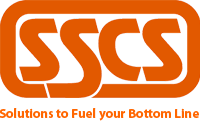The SSCS Interview: Conexxus Executive Director Gray Taylor
Earlier this year the Petroleum Convenience Alliance for Technology (PCATS)—a non-profit organization focused on developing, implementing, and advocating for technological standards as they apply to the retail petroleum market—changed its name to Conexxus (read the details about the branding shift here). We caught up with Conexxus Executive Director Gray Taylor and asked him to elaborate on the reasons for the change, what it signifies, and what we can expect from Conexxus in the future.
 SSCS: I’ll take a guess that the name Conexxus is rooted in “connects us”, but was anything else taken into consideration when coming up with it?
SSCS: I’ll take a guess that the name Conexxus is rooted in “connects us”, but was anything else taken into consideration when coming up with it?
Gray Taylor: We also took into consideration the word Nexus—the apex of thought and connections. The “Con” is in reference to “convenience”, which increasingly is associated with fuels and fast food. Most importantly, Conexxus drives emotional value, in that it is a very up-beat name versus a highly descriptive name (like what we had). A core problem with PCATS was that it was never our name, but Petroleum Convenience Alliance for Technology Standards was too long, short on description, and was hijacked to PCATS—which no one other than insiders knew!
SSCS: It’s been stated by your organization that PCATS has grown beyond data interchange standards to address the emerging challenges of productivity, consumer technology, data security and EMV mandates. Can you give us a few concrete examples of those kinds of challenges and what Conexxus brings to the mix in each case?
GT: Consumer tech—consumerization—will drive retail for the next generation. A consumer is currently defined by what they have in their hands and how they use it. Where we used to have a closed system of pumps, POS systems, etc., we now have broad market technologies—lots of them—seeking to connect with our nicely ordered systems (First Gen PCATS). Our task is to identify those key use cases in consumer tech and provide a secure and flexible path into our store systems.
Another “next gen” driver in retail, supply chain efficiency, is ripe for focus in our highly fragmented segment. By automating document exchange and payment within the DSD and wholesaler ecosystems, we have a shot at “slaying dragons” like Wal-Mart’s interest in small corner stores, the chain drug segment that increasingly competes with us, and dollar stores.
On payments, few think of our segment when designing new mandates or payment systems, like EMV. Despite the fact that our industry accounts for over 12 percent of card payments in the U.S., card brands treat our special needs as an afterthought. Our advocacy in card payments extends to reminding the brands how important our segment is, how it is dominated by single site operators with limited resources and how we use the Primary Account Number (PAN) on payment cards like no other channel.

SSCS: What are the challenges of re-branding a long established entity and how have you addressed them?
GT: Our market research showed little positive recognition of and little engagement with the PCATS brand, while those engaged in it knew exactly what we do regardless of name. That’s called negative equity and a sure sign that it’s time to change a name!
SSCS: Within the scope of your work, what do you think are the biggest challenges facing the convenience and fuel retailing industry?
GT: Here is my list, but membership will continue to respond to, or pre-empt what emerges:
- Mobile commerce and all its components: payments, coupons, loyalty, mobile marketing.
- Big data and how that will enable “micro” interactions with consumers.
- A card payments liability shift caused by an EMV platform that is not really ready to be installed.
- Optimization and efficiencies in the supply chain: how small guys can act like the big guys in ECRM.Technology’s increasing role in policy making—for example, how the ability to accept SNAP payments may hinge on our retail automation.
SSCS:Where does Conexxus go from here?
GT: Our job is to introduce the new brand to as many people as we can—and we have done over 30 presentations that either do that directly (post-launch) or frame the proposition (prior to launch). This phase is about making a brand promise, and selling the new member into understanding how vital we are to their long-term viability.
The SSCS Blog plans on doing original interviews with key industry (and maybe some other) personnel in the future. If you have anyone that you would like to see us interview, please comment on this blog and don’t forget to visit us as http://www.sscsinc.com/.





Recent Comments